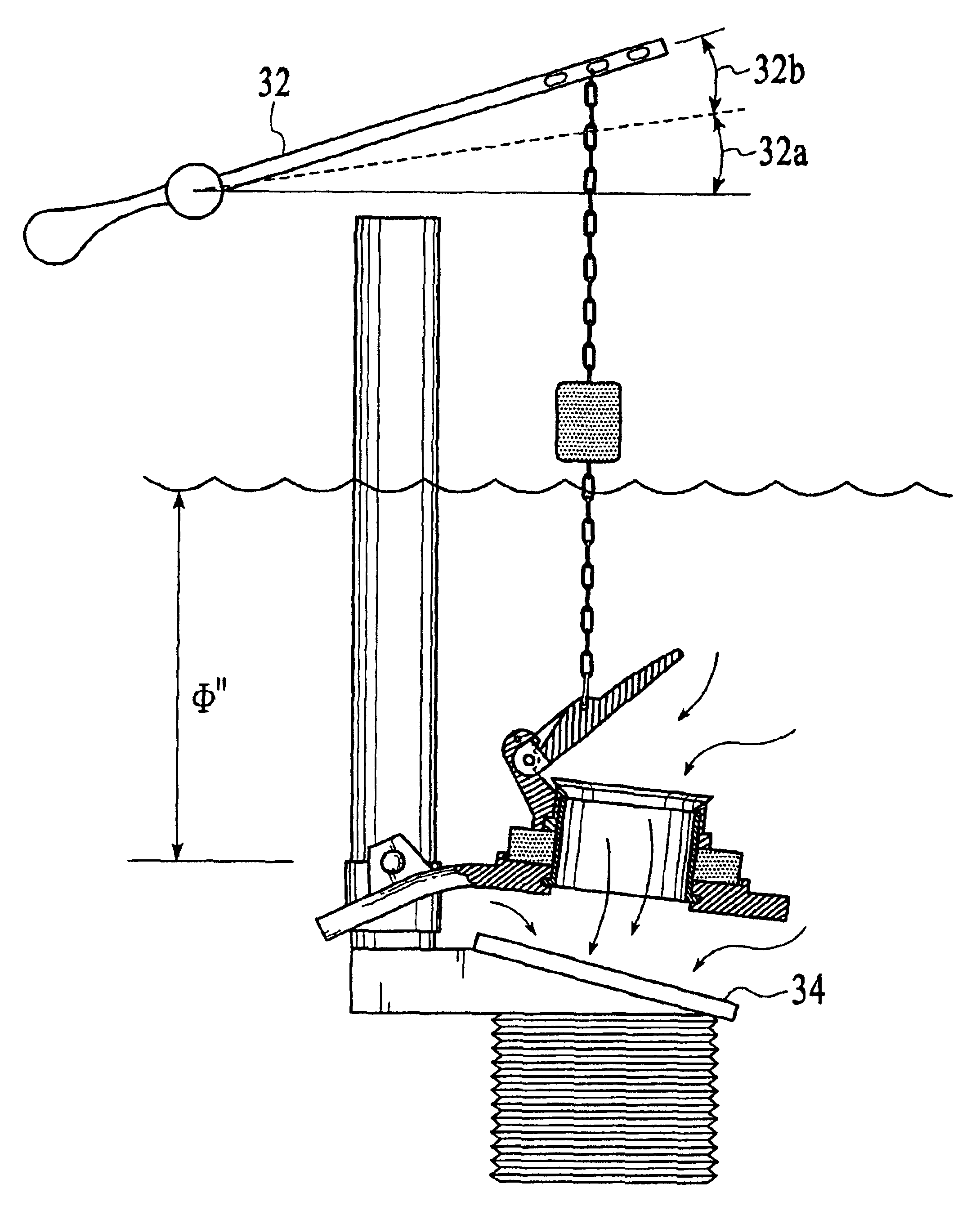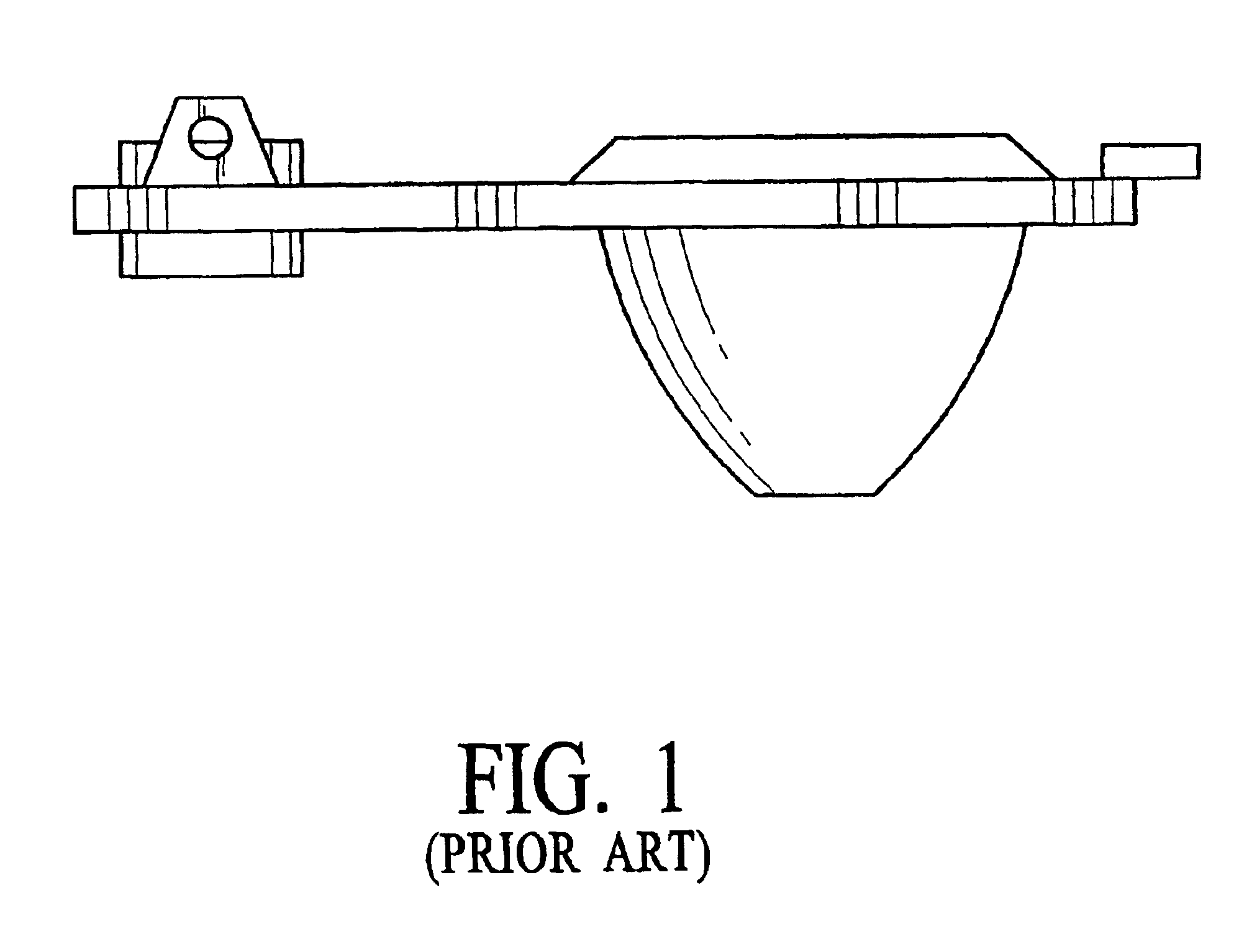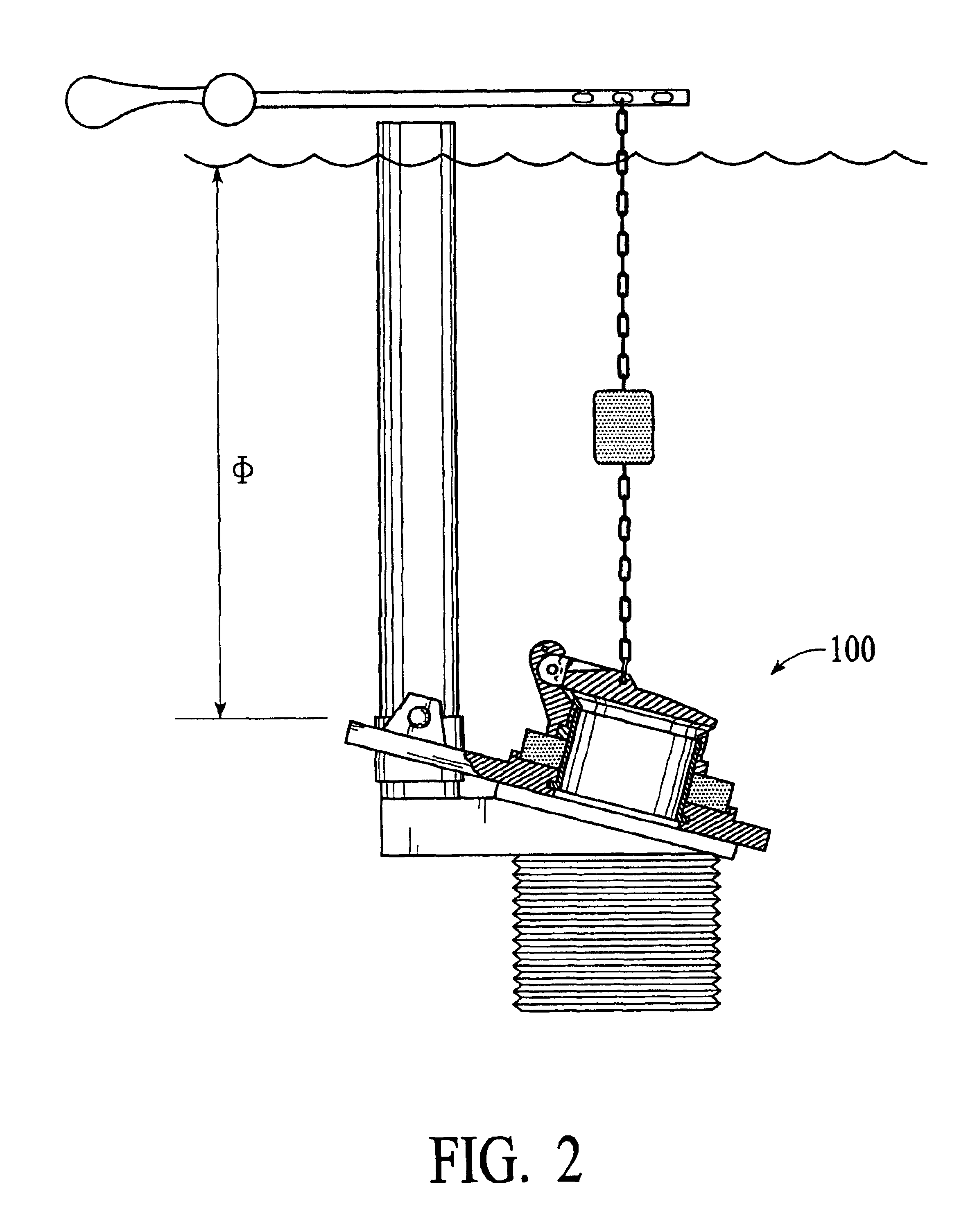Water saving dual flush system of valving
a dual-flush valve and flushing technology, applied in water installations, flushing devices, construction, etc., can solve the problems of low flushing efficiency, low flushing efficiency, and large waste of water resources, so as to reduce the need for expensive recycling of treated water, the effect of simple and cost-effectiv
- Summary
- Abstract
- Description
- Claims
- Application Information
AI Technical Summary
Benefits of technology
Problems solved by technology
Method used
Image
Examples
embodiment
Preferred Embodiment
Instillation: This system of valving is designed to fit existing hardware in gravity flow type water-closets. Common flapper type valve attachment points are provided to attach to new or existing overflow pipes. A flush chain, or equivalent, is provided to attach to the new or existing flush handle arm. The instillation of this valving system converts the existing toilet, or new toilets, from flapper or ball type single flush valving to a water saving dual flush system.
Operation: Partial rotation of the flush handle will open the upper valve only and allow a preselected quantity of water to flush liquid waste. Full rotation of the flush handle will open the bottom valve and release a larger quantity of water for flushing solids. Each of the flush modes provide a positive valve release feel to the handle so that the user cannot mistakenly use the wrong flush mode. Activated flush modes will complete their flush cycle and return to the ready status automatically. A...
PUM
 Login to View More
Login to View More Abstract
Description
Claims
Application Information
 Login to View More
Login to View More - R&D
- Intellectual Property
- Life Sciences
- Materials
- Tech Scout
- Unparalleled Data Quality
- Higher Quality Content
- 60% Fewer Hallucinations
Browse by: Latest US Patents, China's latest patents, Technical Efficacy Thesaurus, Application Domain, Technology Topic, Popular Technical Reports.
© 2025 PatSnap. All rights reserved.Legal|Privacy policy|Modern Slavery Act Transparency Statement|Sitemap|About US| Contact US: help@patsnap.com



